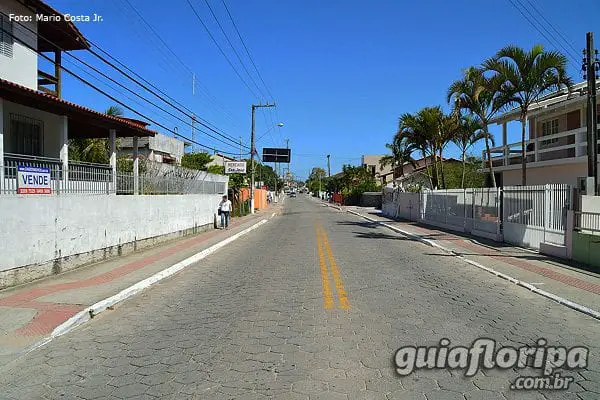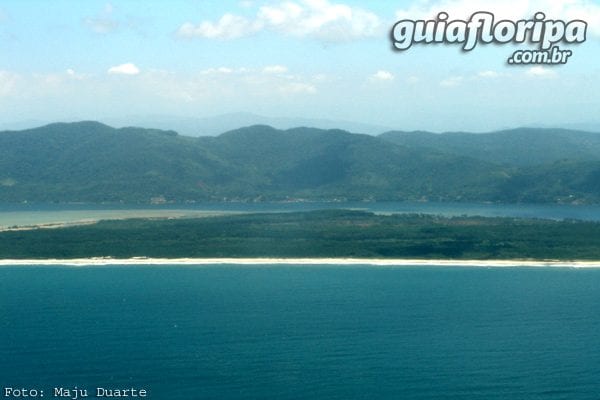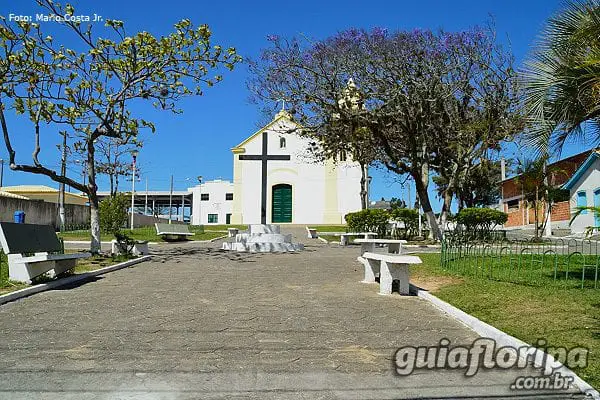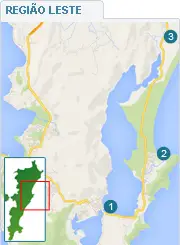São João do Rio Vermelho - Florianópolis neighborhood
Região: east of the island
Close quarters: English from Rio Vermelho (7,5 km) | Barra da Lagoa (11 km)
Nearby beaches: Mozambique beach | Santinho beach | Barra da Lagoa beach
Distances: Centro e Bus Station 29 km | Airport 32 km
Also find: surf, trail, dunes, Forest Park, lagoa, fishing

The São João do Rio Vermelho neighborhood is located in the nimble of Santa Catarina Island, between the neighborhoods of Barra da Lagoa e English. Approximately 31 km from the center Florianópolis, Rio Vermelho, as it is better known by the local population, is still a neighborhood with predominantly rural characteristics.
With an area of 31,68 km² and an estimated population of more than 14.000 inhabitants, the houses are concentrated along the João Gualberto Soares Highway and in more than 100 easements, many of them built illegally.
The neighborhood, which was once concentrated near the church and cemetery in the region, in the locality called Freguesia, has now expanded and includes other localities such as Travessão, Muquém, Porto, Mozambique and the Parque Florestal do Rio Vermelho.

The parish is the part of the neighborhood along the Rodovia João Gualberto Soares and houses the oldest nucleus of residents. The localities of Travessão and Muquém, both to the north, are more recent and, in part, the result of invasions, regular and clandestine subdivisions.
The towns of Porto and Parque Florestal do Rio Vermelho are close to the southern part of the neighborhood. Porto is home to a small group of residents and extends to the entrance to the Mozambique beach. The Parque Florestal do Rio Vermelho is an area of permanent preservation with more than 1100 hectares of extension, being formed by a pine forest that protects an extensive coastal sandbank and that joins the Morro das Aranhas to the Barra da Lagoa, forming a diversity of systems: wetlands with mangrove vegetation, masses of native vegetation, mobile dunes, exotic forests and fixed dunes.
ADVERTISING
On the outside of the Rio Vermelho Forest Park, facing the Atlantic Ocean, is Praia do Moçambique, also known as Praia Grande. There are 13.500 meters of fine white sand and thick sea, which goes from Barra da Lagoa to Ponta das Aranhas, being the largest beach in extension on the Island of Santa Catarina.

São João do Rio Vermelho, as it is far from the Centro, has not had a consistent development over time. It has only one hotel and a few inns. Its commerce is modest, geared to local needs, with a few restaurants along the main road. But it is this same distance that has made the neighborhood still maintain its cultural characteristics, especially the way of speaking.
History
The name of São João Batista do Rio Vermelho is a tribute to the patron saint of the region and also a reference to the river that rises in the sand hills of the neighborhood and which separated the plantations from the beach. Residents noticed that this river took on a reddish color at some points along its length, which they imagined would happen due to the composition of the land. In fact, the presence of carbide in the soil was later found.
Like much of Santa Catarina Island, Rio Vermelho used to be inhabited by several indigenous populations, especially the Carijós. Records suggest that the presence of the tribe was quite expressive in the area that today corresponds to the neighborhood, since a reasonable amount of artifacts and sets of bones were found along the beach of Mozambique.

From 1748, the Rio Vermelho began to be occupied by descendants of the Azorean and Madeiran couples who founded the village of Nossa Senhora da Conceição da Lagoa. At first, the houses were built close to the rivers as a matter of practicality. With the construction of the Church of São João Batista, in 1750, the growth of the village sought to take it as a reference as well.
The main economic activities developed in the region were agriculture and livestock. Corn, coffee, manioc and sugar cane were planted; milk was produced. All the surplus of this production was marketed in the Public market. In addition, there was a good amount of mills and some production of bobbin lace quality ceramics. Fishing was just an economic supplement.
ADVERTISING
In sociocultural terms, the community was extremely involved in the activities promoted by the church. Everyone knew each other and participated in the masses, novenas and festivities, the most important celebrations being the procession of the Feast of Saint John the Baptist and the Feast of the Holy Spirit. According to reports, dances were also held and the Boi party.
This bucolic scenario underwent transformations in the 1930s with the introduction of boat fishing. The houses started to be concentrated on the main road of the village, the contact with other communities on the Island intensified and even the materials used in the constructions became different. Those who went to work in Santos or Rio Grande do Sul now had the possibility of acquiring land, which led to a commercialization process.
In the 1960s, Florianópolis underwent a major urban renovation and this made new residents and many tourists discover the city. Neighborhoods like Canasvieiras, English e Conceição Lagoon they exploded considerably both in terms of population and in terms of visitor traffic, which made Rio Vermelho, the “shy” neighbor of the three, also feel the consequences of this growth.

However, it was only in the 1980s that Rio Vermelho was permanently integrated into the urban complex of the capital. With the paving of Rodovia João Gualberto Soares, access to the neighborhood became easier and this allowed tourists to finally get to know the charms of the neighborhood. In the 1990s, a large number of people moved to Rio Vermelho because of the low prices of real estate and land.
DISCOVER MORE Eastern Region Neighborhoods from Florianopolis













